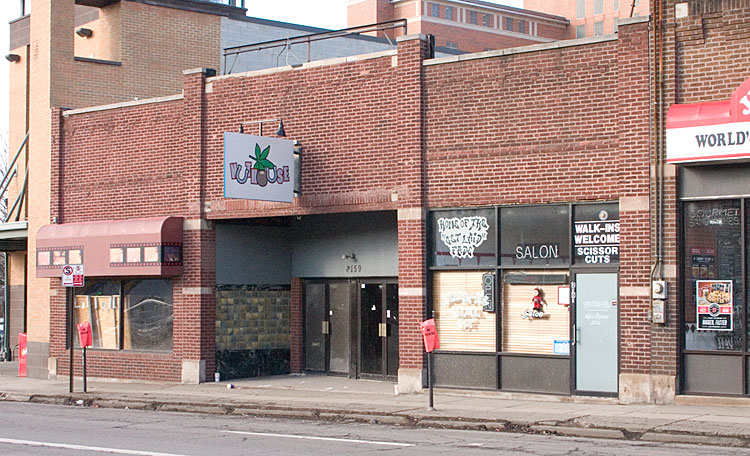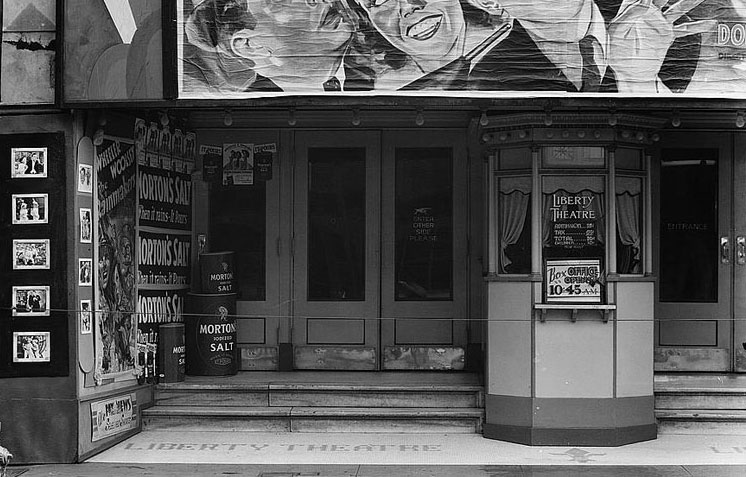THE ALHAMBRA THEATER (1913-1988) Back in the early years of the University District, movie attendance was a ritual in the life of most Americans. Almost everybody went to the movies at least once a week and many went more often than that. The theaters they went to were mostly small neighborhood theaters within walking distance of their homes. The Alhambra at 2159 N. High St., just north of Lane, was one of these theaters. The Alhambra first opened its doors in 1913. In one incarnation or another, it continued as a theater for the next 75 years, exhibiting nearly 8,000 films, selling untold tons of popcorn, and winning some landmark battles for freedom of expression. |
||
|
||
|
The Alhambra showed its first movie in 1913 (or possibly late 1912). It was one of over 50 moving picture exhibitors in the city. Most of these exhibitors were theaters in name only; just a rented room and a projector. The Alhambra was different. It was an actual theater, a permanent structure built expressly for the showing of films. The Alhambra was the University District's first real movie theater. Popular films that first year included The Battle at Elderbush Gulch, a Western; Traffic in Souls, a social message picture about the perils of the sex trade; comedy A Noise from the Deep which introduced the pie fight; and the German horror film A Student of Prague. Stars of the day were Mary Pickford, Lionel Barrymore, Mabel Normand, and Fatty Arbuckle. Silent film icons Charlie Chaplin, Douglas Fairbanks, Laurel and Hardy, and Valentino had yet to star in a picture. Lillian Gish was still doing bit parts. Films were black and white, silent, and ran 15 to 70 minutes. When it opened, the Alhambra sat in a different neighborhood than it does today. The corner of Lane and High was a small commercial area in the midst of a large residential neighborhood. A Kroger’s, an A&P, a bakery, and a hardware store were the theater’s neighbors. Ohio State stopped south of Woodruff and a neighborhood of substantial single-family homes, some apartments, churches, an orphanage, and a school stretched north to Lane. The Alhambra wasn’t grand like the downtown movie palaces. It presented a simple brick façade. There was nothing particularly Moorish about it despite the name. Typical for a theater of the day, it didn’t have a large marquee. (One was added later.) The recessed entrance was accented with black marble and green tile. Back in the day, it would have been festooned with brightly colored banners, posters, and signboards advertising current and upcoming features. Electric lights almost certainly lined the entrance. Small shops operated on either side of the entrance. The south side was occupied by a candy shop, which probably did most of its business supplying treats to moviegoers. On the north side was a barbershop operated from 1916-49 by T.B. Phillips. The Alhambra was large as neighborhood theaters go. It seated about 500 patrons. Otherwise, the interior was unremarkable. In the earliest days, a piano up front provided musical accompaniment for the silent films. Later a Wurlitzer theater organ was added. In the late 1920s, the theater was set up for sound. The Alhambra was enough of a University District landmark that it lent its name to Alhambra Courtyard, a group of brick rowhouses built across High Street from the theater in the late 1910s. |
|
Neighborhood theaters like The Alhambra ran a different pair of films every couple nights, showing six to eight different features in the course of a week. The double features usually consisted of a recent release paired with an older or B picture. Admission was cheap at about 10¢ (in today’s dollars, about $1) and audiences got their money’s worth. A typical evening at the movies consisted of a newsreel, followed by a short (Little Rascals, Three Stooges, Ripley’s Believe It or Not, etc.) or serial episode (Perils of Pauline, Flash Gordon, Dick Tracy, etc.), followed by a cartoon or maybe a sing-a-long song. Then came the coming attractions followed by the second film on the bill. Finally, the evening ended with an intermission followed by the feature presentation. A night at the movies meant a night at the movies. |
Above: Print ad for the Alhambra from 1923. Below: Ad from 1939.
|
|
Neighborhood theaters did not advertise heavily as did the big downtown theaters. It cost money and since their customer base consisted of people who lived just a short distance away and passed by the theater every day, there was really no need. The neighborhood theaters were no strangers to promotion though. Eye-catching signs, banners, lobby cards, and stills bedecked their entrances. The small theaters also used publicity stunts like sending an employee to walk the streets in a ape suit to promote a showing of King Kong or a Tarzan picture. Where possible, cross-promotions with area merchants were arranged. |
||
|
||
The small theaters also offered rewards for patronage. Amateur nights invited patrons to watch their friends and neighbors sing and dance for small prizes. Dish nights afforded the opportunity to collect a set of china by attending the theater weekly. Bank nights and grocery nights were lottery-like schemes in which loyal patrons had the chance to win a bundle of cash or a week’s worth of groceries if their ticket was drawn.
|
||





